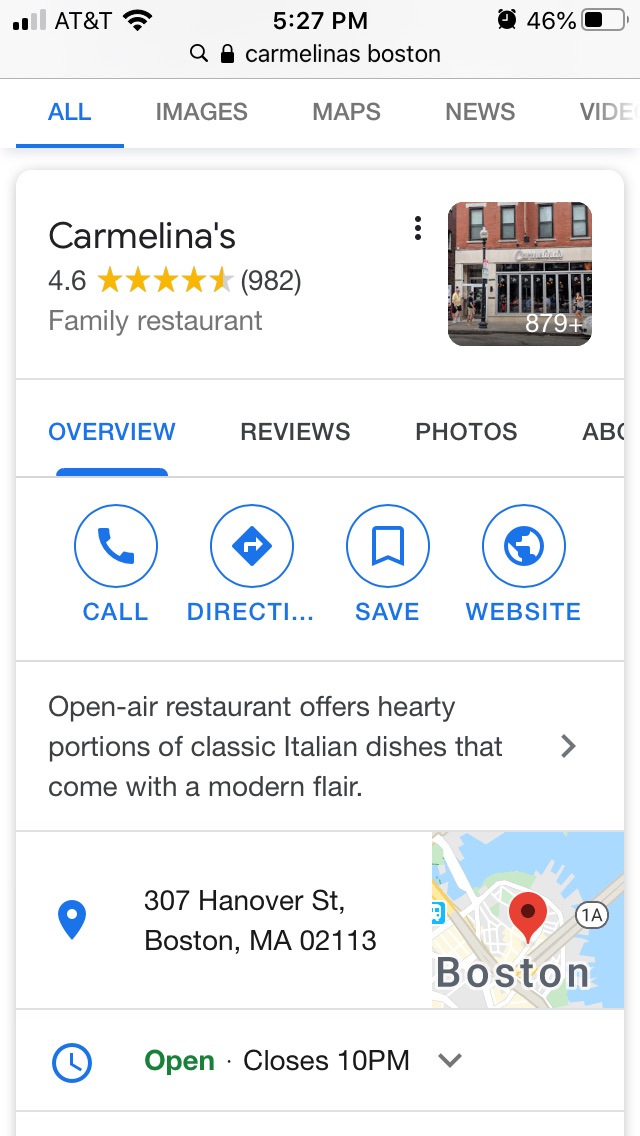Have you ever thought about how you can finish a meal that took hours to prepare in just a matter of minutes? That’s not even factoring in the ingredients that took weeks, months or even years to grow before being harvested and shuttled to the restaurant.
Cooking is truly an exercise in entropy.
In the restaurant business, there’s another side to every meal that most customers are even less appreciative of, and that’s the amount of time and effort that goes into marketing.
Restaurant marketing is by no means fundamentally different from marketing in other industries. As we pointed out in a previous blog post on the subject, it’s about “increasing market visibility, attracting new customers and generating revenue.”
But there are some nuances and unique challenges to creating a restaurant marketing plan. Let’s discuss.
The key ingredients of a marketing plan
A marketing plan is how you document your marketing strategy and prescribe specific tactics that will help you achieve commercial goals. Every great marketing plan needs:
A value proposition
What makes your restaurant unique? It’s one of the hardest questions to answer – and no, “great food” is not enough. Lots of restaurants that have great food fail because they haven’t done enough to differentiate themselves from other restaurants. Really think about the dining experience here – your menu, your decor, your branding. All of these need to have a concise, memorable and marketable motif.
An audience
Who will your value proposition appeal to? Families on a budget? Young, environmentally conscious vegetarians? When you’re a restaurant owner, creating an audience profile is uniquely challenging because your audience is primarily local. Meaning, you need to do research to make sure that your target market actually has a presence in your restaurant’s area.
A marketing budget
Restaurateurs may be especially subject to seasonal restaurant marketing budget constraints depending on their market – a restaurant in a tourist town may struggle in the off-season, for instance.
Goals
You need measurable goals that will actually tie back to revenue. Let’s say your marketing goal is to improve your social media engagement. You need to not only measure that engagement over time (followers, likes, clicks, shares, etc.) but also figure out how those improvements have contributed to foot traffic and revenue. For instance, how many of your online orders can be traced back to a specific marketing campaign? Google Analytics is great for showing you how traffic arrives at your site, and what that traffic went on to do.
Tactics
These are the methods you’ll use to achieve specific goals. In a restaurant marketing strategy, the most popular tactics include:
- Event marketing.
- Social media marketing.
- Local search engine optimization.
- Advertising (digital and traditional).
- Restaurant email marketing.
- Loyalty program development.
- Influencer outreach (e.g., building relationships with food bloggers).
- Blogging.
In recent years, digital marketing tactics have become increasingly important in the restaurant industry, especially as online ordering, delivery and takeout have become more popular.
Traditional advertising is still important to restaurants, especially since foot traffic can still be a valuable source of patronage.
Nevertheless, customers also crave a convenient way to place an order for pickup (especially during, say, a pandemic).
Grassroots marketing is key
Several of our marketers have previously worked at restaurant groups. Project Manager extraordinaire, Alexandra Rowinski, is among them.
Her advice is simple: Restaurant marketing is heavily interactive, grassroots and communal.
And it makes sense. The product is made, delivered and consumed within a geographic community. This is as true for a fine dining restaurant with a single location as it is for multi-location restaurants. Customers aren’t faceless consumers at the other end of an internet connection.
Consequently, social media marketing, event marketing and email marketing are the channels she found herself relying on most.
Social media marketing
Part of that means being active enough on social media so that you’ll start to attract followers. If a former customer has a good experience at your restaurant and chooses to follow your page, you increase your brand’s exposure to potential customers on that social media platform.
But the real prize is user-generated content from loyal customers, especially on Instagram.
Having former customers rave about your food to their entire network is really good for business and brand awareness. Case in point: If you didn’t know that Boda was a great Thai restaurant in Portland, Maine, you do now.
By the way, it helps to encourage customers to engage with you on social media – at the point of sale, upon sending an online order confirmation, etc., with incentives such as a restaurant promotion (e.g., discount or free side), and of course, with user-generated content campaigns.
Take the example of Chicago-based Tuco and Blondie’s mural campaign, which helps customers build their Instagram cred by posting photos of them on their account. The tradeoff, of course, is all the free branding the restaurant gets when the people in the photo share those pictures.
Beyond attracting new customers directly, Instagram is also a great way to make mutually beneficial connections with local partners, vendors and other community influencers. They’ll tag you in things, which brings even more attention to your brand.
Event marketing and partnerships
When Alex was tackling some of the marketing and PR at the restaurant group, she collaborated with the local public school system to help organize an event where kids got to meet the chef and learn about healthy eating and cooking. This kind of community involvement is invaluable to restaurants.
And yes, forging partnerships with delivery services such as UberEats is certainly helpful, especially as you attempt to enter new geographic markets.
But if your goal is to make your restaurant a staple in your community – and that most definitely should be your goal if you want to spark word of mouth marketing and achieve long-term business success – prioritize engaging with the other people, businesses, vendors and community organizers that make up the community.
To boil all this down into a lesson, I’ll just say this: Ingraining your restaurant in your community should be a priority in your marketing strategy. To this end, social media and event marketing will be particularly important.
And don’t forget about local SEO
When I’m in an area that I’m unfamiliar with and am looking for a place to eat, I’ll do one of two things:
- Explore the top-rated places on Yelp.
- Google something to the effect of “The best restaurants in [my location]” with the hopes of getting a list of places.
Either way, local SEO will directly influence the results I find.
For starters, restaurants need to claim and optimize their Google My Business (GMB) account to make sure the information about their business on Google, including business hours, is accurate and up-to-date.

You also need to verify the accuracy of the information listed on other sites, forums and business directories such as Yelp, Trip Advisor, Foursquare, Facebook and OpenTable.
Each time a website mentions your company name, you earn a “citation.” Citations are generally positive. However, when those citations are accompanied by inconsistent information, you send Google mixed messages – and that’s not good.
Long story short, make sure that the name, address, phone number and website (NAP+W) are correct across business directories.
There’s a lot more to local SEO, but we’ve gone into that at length here.
Where that leaves us
In a nutshell, you have your work cut out for you.
But much like Auguste Escoffier’s famous brigade system, your marketing plan will help keep your tactics organized and efficient.
Just remember to track your successes and failures using marketing KPIs. There’s no shame in not getting things right the first time.
Bonne chance, mon ami.





